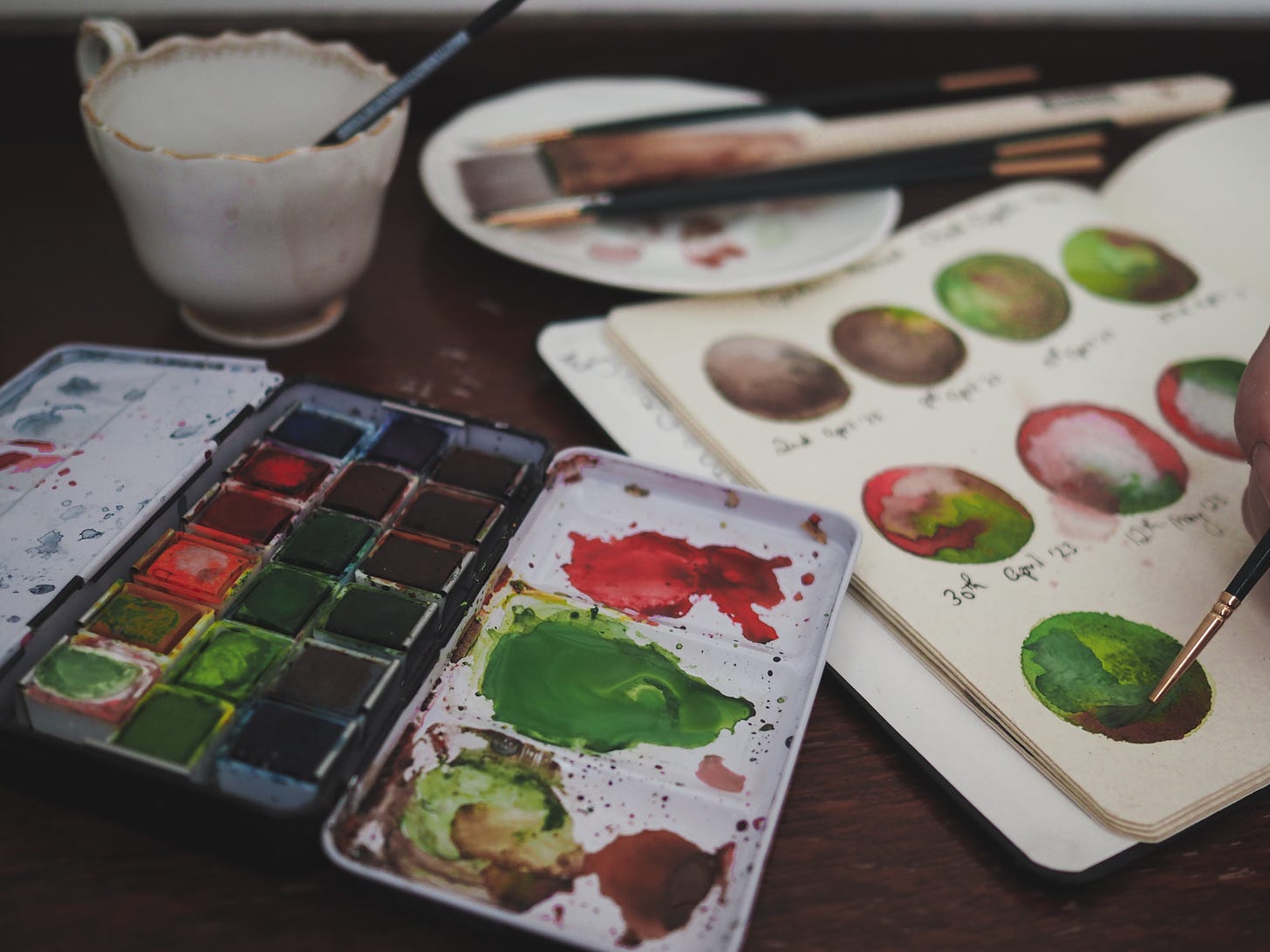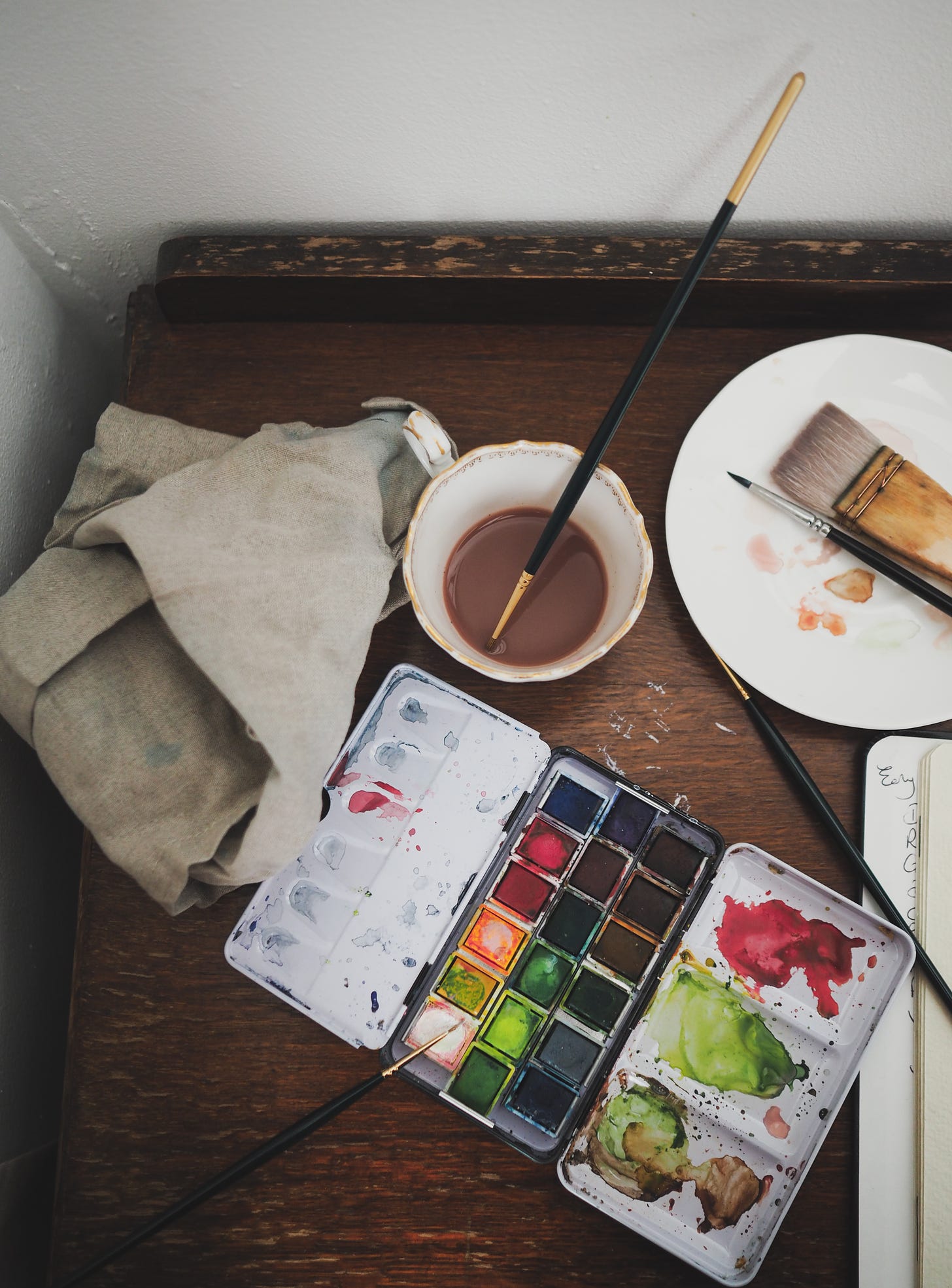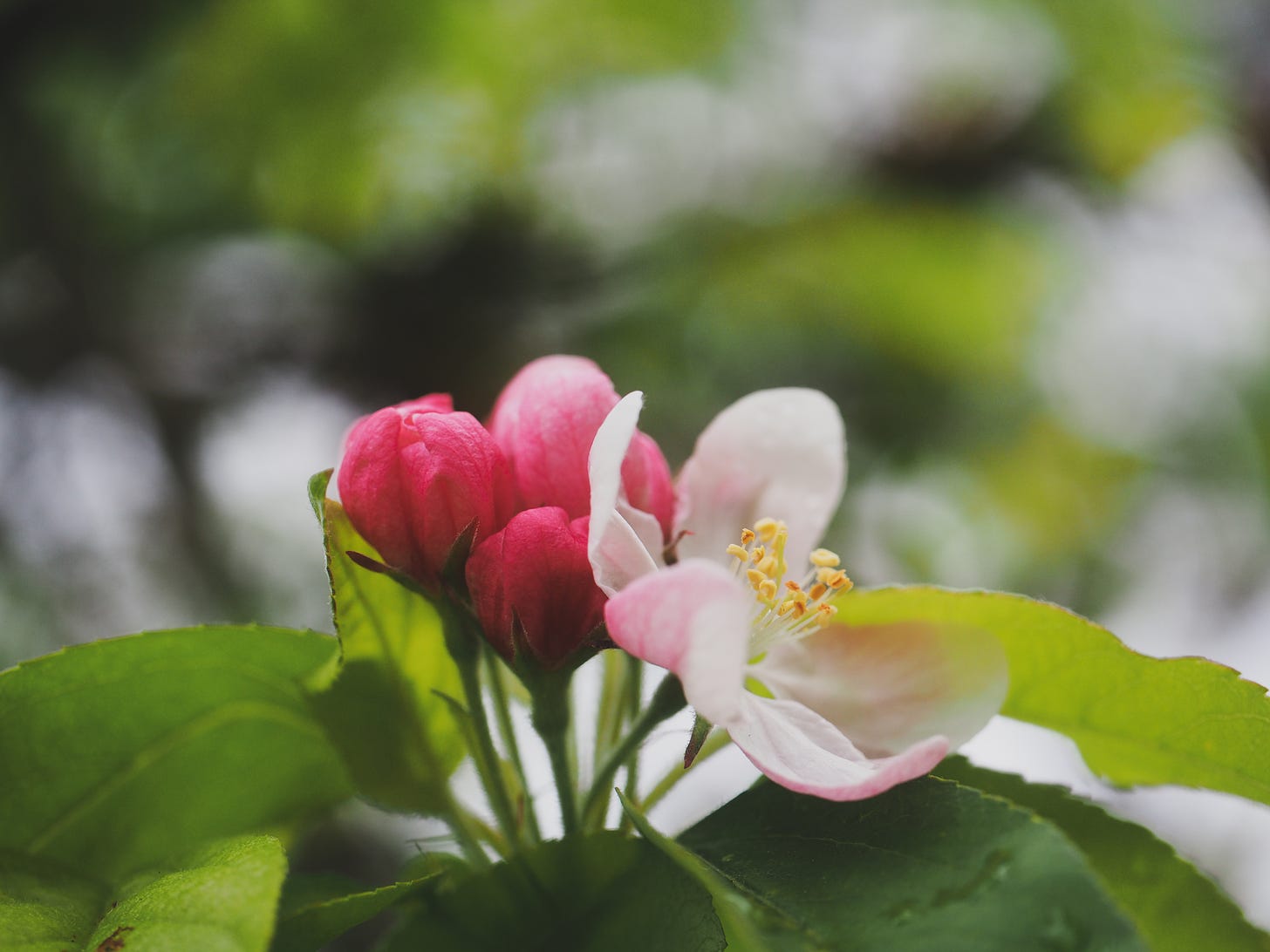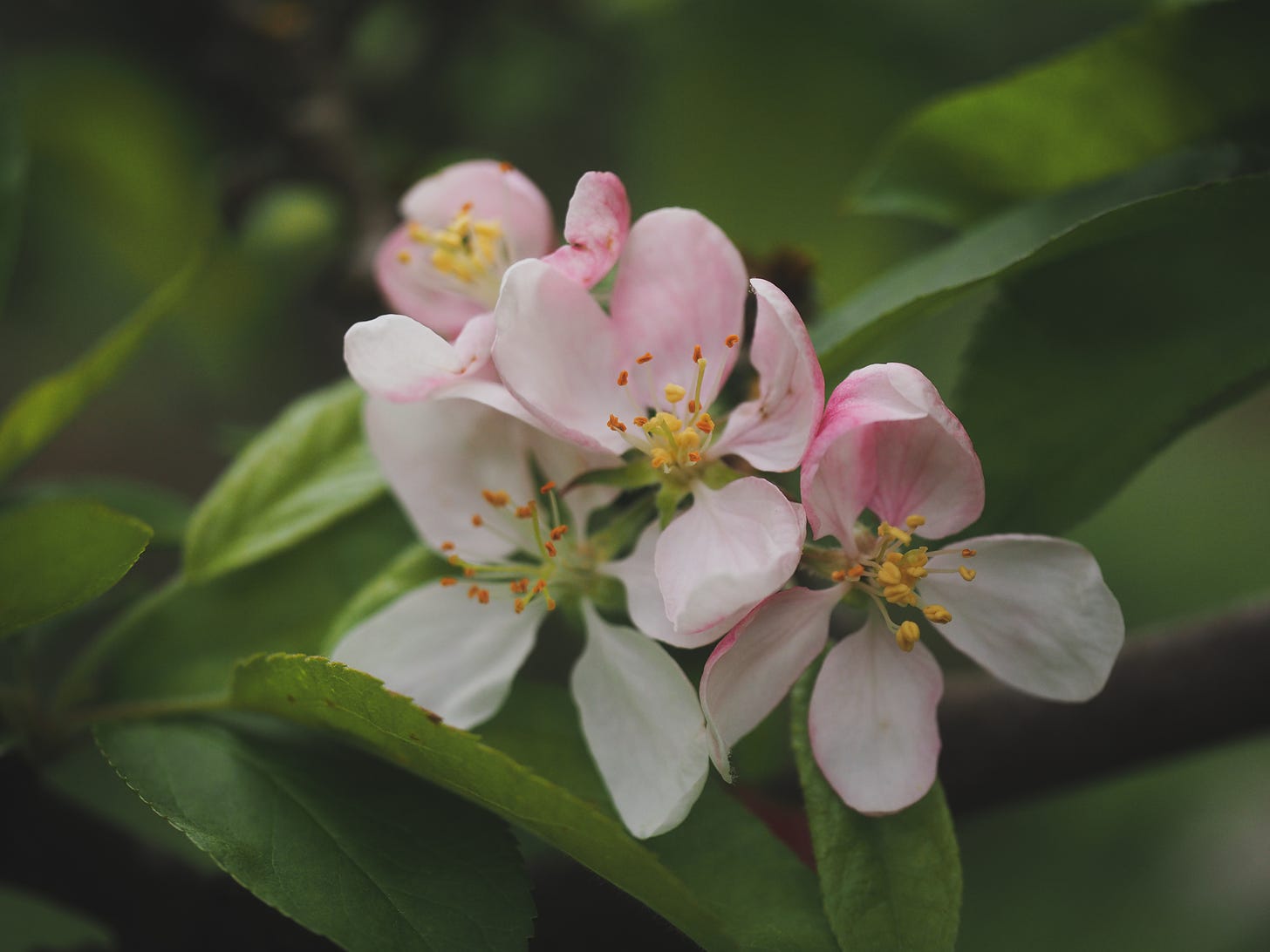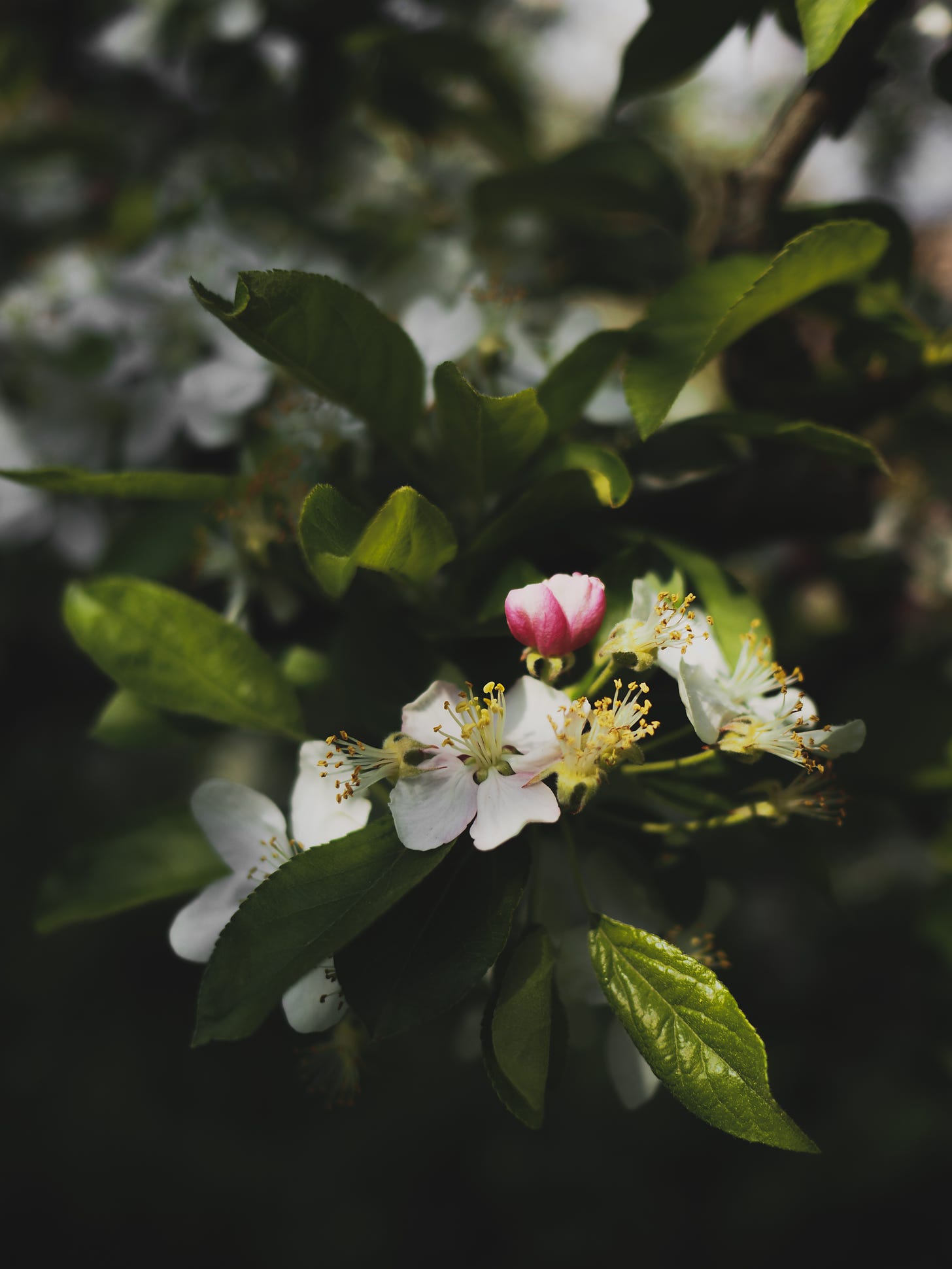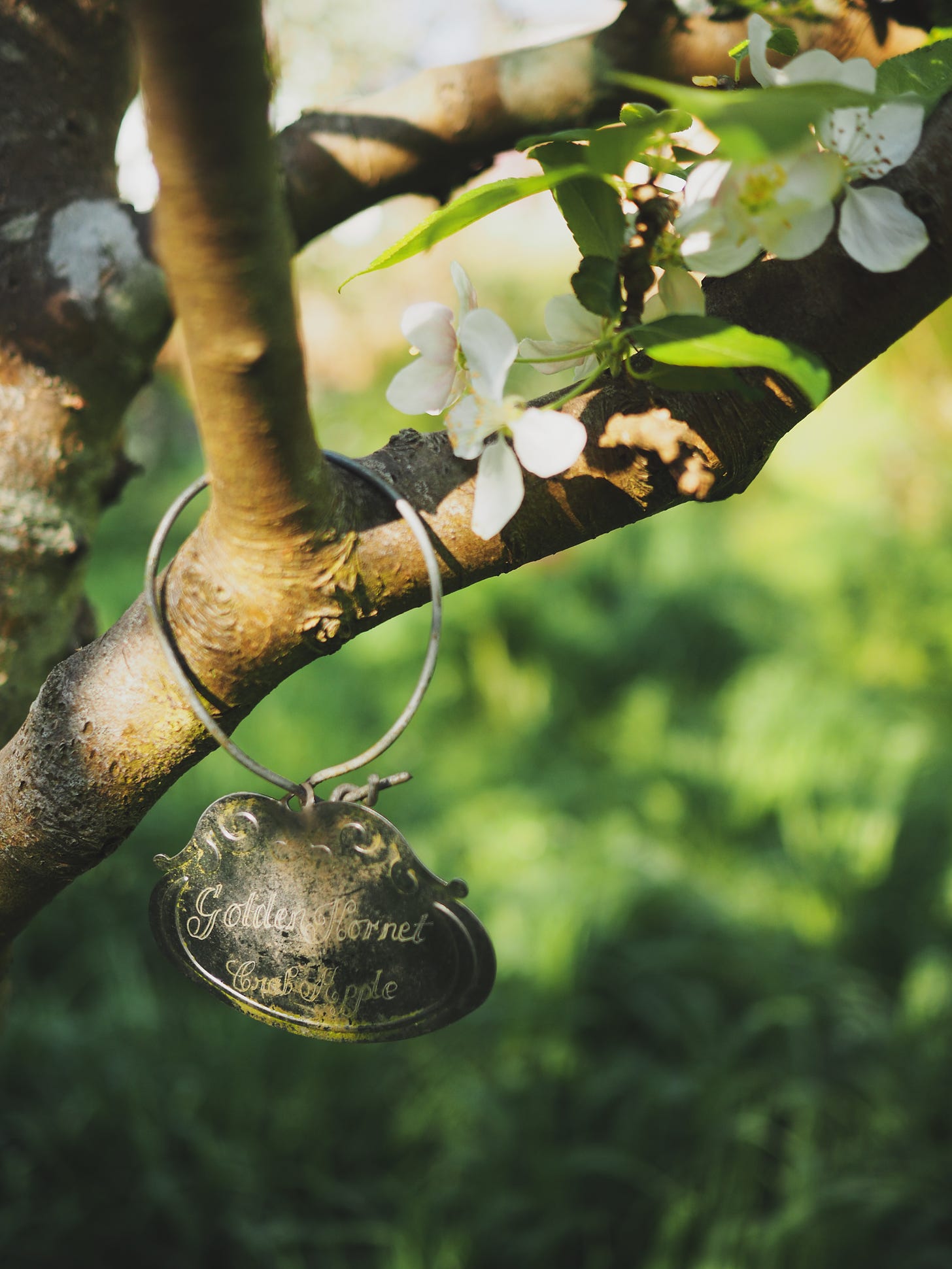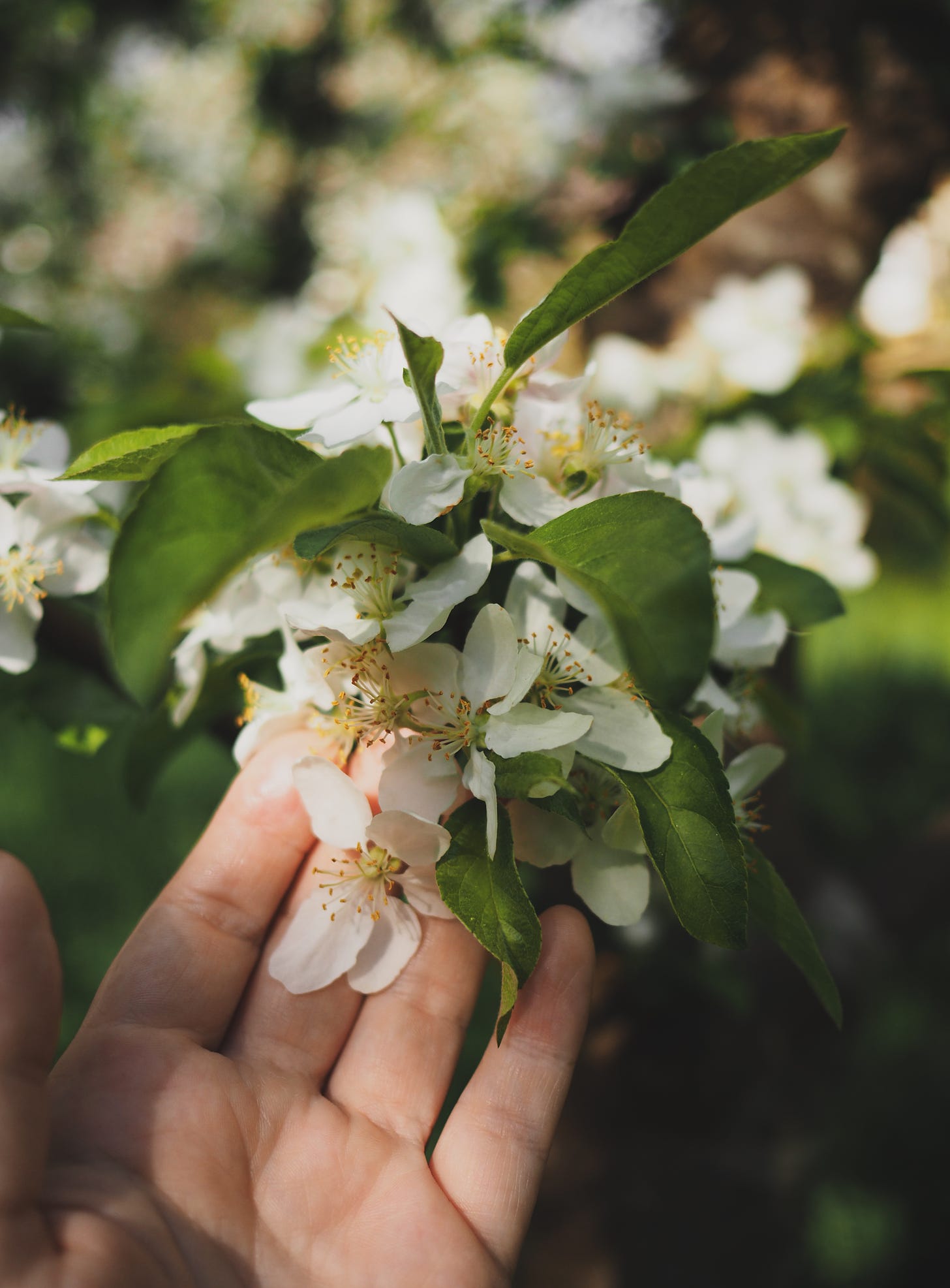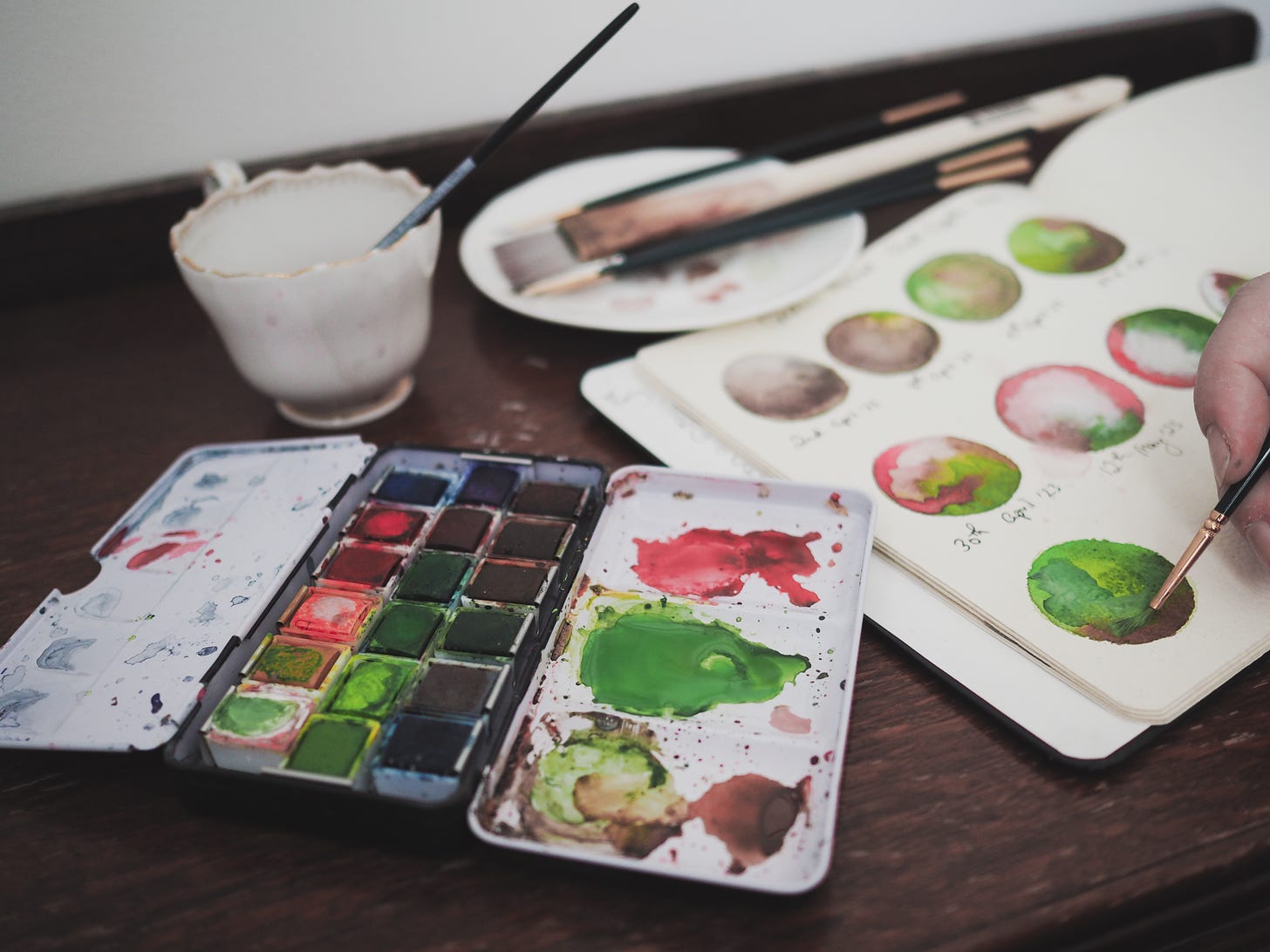For a long time, I was convinced that the only way to ‘do’ art was to do it perfectly and professionally. My old sketch books are testament to this philosophy. When I flick back through them, there are chunks of space where torn out pages full of ‘imperfect’ art was ripped out and binned during multiple episodes of feeling inadequate. I feel a bit sad about this for many reasons. Firstly, I can see how unnecessarily hard I was being on myself. Secondly because I have lost the chance to see myself learning and improving, as well as the process and my experiments. And thirdly because I can see how I considered myself to be a failure. If I could, I’d give younger Jo an encouraging squeeze around the shoulders and tell her to keep going regardless.
I still love art, particularly experiments with watercolours; but these days instead of a daunting new sketch pad, I keep a physical nature journal. This feels much less intimidating and less likely to propel me into the ‘I wish I had talent’ perfection trap once again.
My nature journal is a bulging mess of leaves, feathers, scribbles, smudged ink and rough paintings. It’s mostly a private space where I can let go of the fear of anyone judging my work. In a way, it’s also a reflection of how I see the world.
Inside my nature journal, I can let myself go and make any markings with any medium. I take it with me during my walks. Sometimes I make the quickest pencil line drawing, to remind me of something that I want to re-visit when I have more time to paint a more detailed study. Nature is such a willing and forgiving subject because it doesn’t demand anything - least of all perfection. The pressure is off to create something beautiful and instead there’s time and space to explore. There’s no finished product either, it’s just an ongoing collection of memories, curiosities, and shapes on a page.
One of the most important things that my nature journal has taught me, is the art of noticing. Looking for detail in a plant, tree or flower requires a slowing-down, whether it’s a conscious effort to do so or whether it’s something catching your eye by chance, for long enough to stop and pause.
One of the most recent and wonderful ways I’ve found to do this is by tracking the changing colour of a tree over a period of time. This idea came from Agnes Becker, an artist, science communicator and creator of We Are Stardust. Agnes suggests choosing a nearby tree, then each week, draw a circle (or use her free template) and colour it in with the overall colour of the tree. Add the date under the circle and then continue doing this each week through the seasons to notice how the tree changes over time. I started this a few months ago and I’m really enjoying seeing the subtle colour differences each week, as the tree (a crab apple in my case) transforms throughout the year. It’s also a wonderful exercise in letting go of perfection, because the point of it is to capture a moment, without worrying about creating a masterpiece.
The series of photos below shows the crab apple tree — and my watercolour recordings of it — from March to May. What I found incredible was the change in colour from the most intense cerise blush of the blossom buds into shades of porcelain white when in full bloom. I wonder where that pink disappears to? By the time the blossom has reached its peak, there’s no sign of the rosier tones.
This process of noticing can apply to anything, I just choose nature because I find it so soothing and so good for my emotional health. For example, seeing tiny, overlooked details of an under-loved weed with an abundance of textures and a whole spectrum of hues — as beautiful as any flower — has been a really therapeutic experience. Not only has it made me properly see what’s around me, and made me think twice about what’s considered inferior in nature, but it has also helped me to hold my focus on something outside of my mind. In other words, it gives my brain a breather from the churn of thoughts and feelings. And it has helped me to feel more and more connected to the natural world. It’s about more than art.





